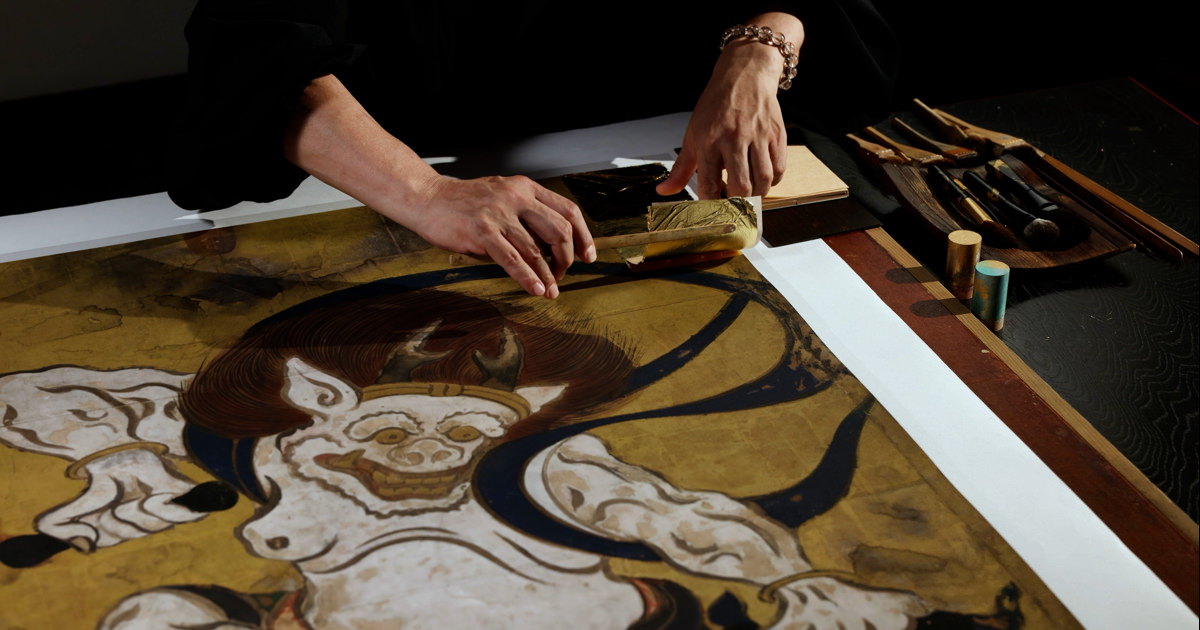Cypress Trees
High-resolution facsimiles
- Material
- printed, gold on washi paper
- Period of creation
- The Joint-research Project with CPCP 2021
- Collection
- Tokyo National Museum
Original
- Cultural property designation
- National Treasure
- Artist
- Kano Eitoku
- Historical era
- Azuchi-Momoyama (16th century)
- Material
- ink, color, and gold on washi paper
- Medium
- pair of four-fold screens
- Size
- Each screen H170.0 × W230.4 cm
- Collection
- Tokyo National Museum
Description
This work of striking power and opulence aptly represents the art of the Azuchi-Momoyama period, when the monumental culture of Japan‘s warrior class blossomed. A magnificent cypress tree with a billowing trunk and sprawling boughs lies against a backdrop of gold-leafed ground and clouds. The tree exudes an overwhelmingly-powerful sense of vitality, like a huge writhing snake. The only motifs on display are the cypress tree, some boulders, and the ultramarine surface of the water. By minimizing the number of colors and simplifying the background, the artist creates the impression that the tree is surging ever nearer to the viewer. A closer inspection reveals sections where the paint has peeled off. This suggests the tree was once even thicker with verdant leaves. This is thought to be a very late work by Kano Eitoku, the most famous painter of the time. Though the work is now mounted on screens, it was originally a sliding-door painting in the residence of the Katsuranomiya family, or the Hachijonomiya family as it was formerly known, who were court nobles in Kyoto. It originally adorned 4 sliding doors but was subsequently remounted on an 8-panelled screen. It suffered considerable wear and tear in recent years, so major restoration work was carried out in 2013.Upon restoring this painting, it was mounted on two separate screens in order to remedy the problem of misalignment of the composition where the panels met, and partly for conservation purposes.
— Cited from Colbase




